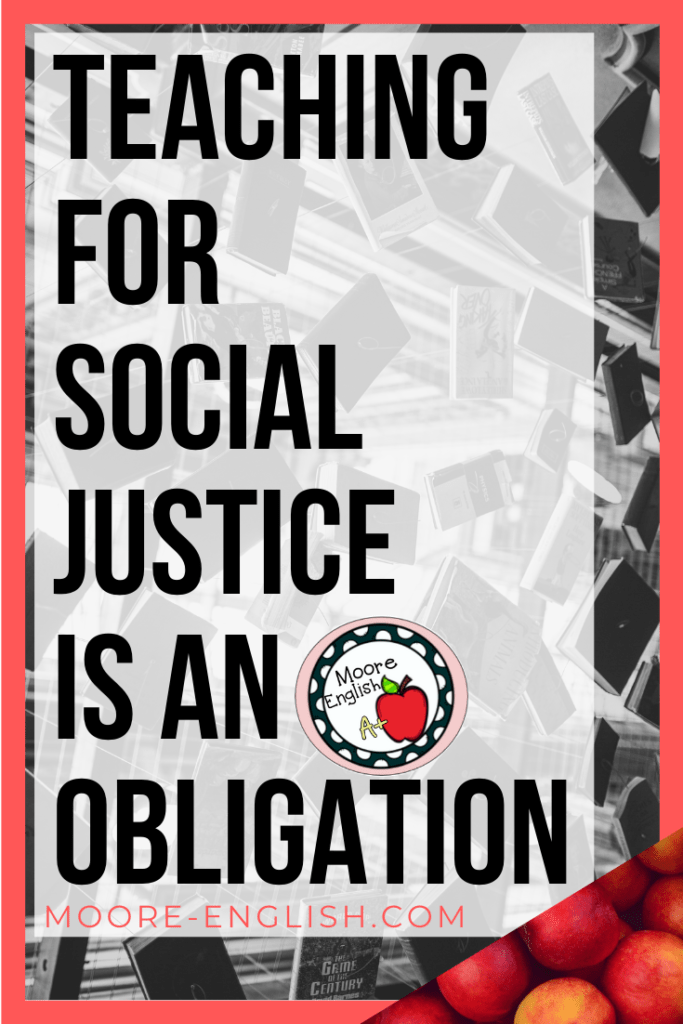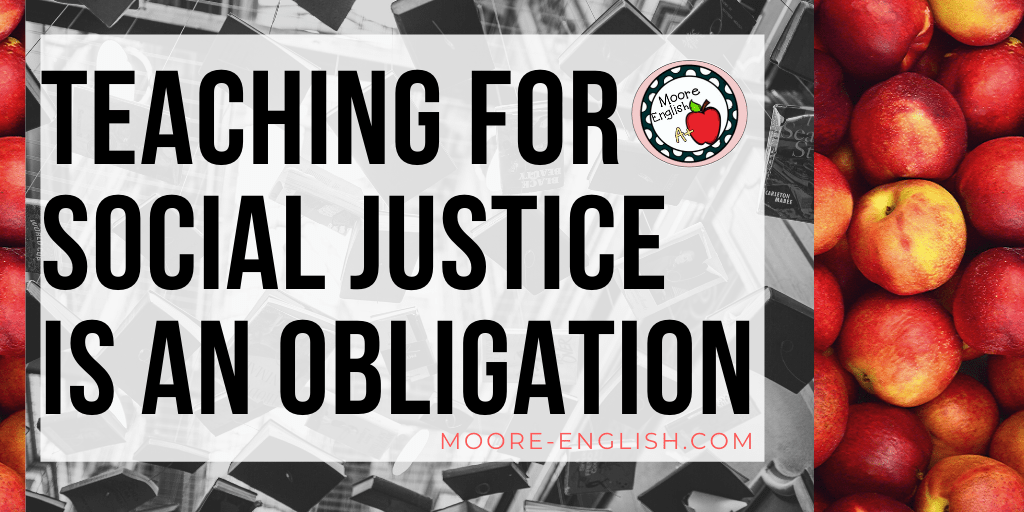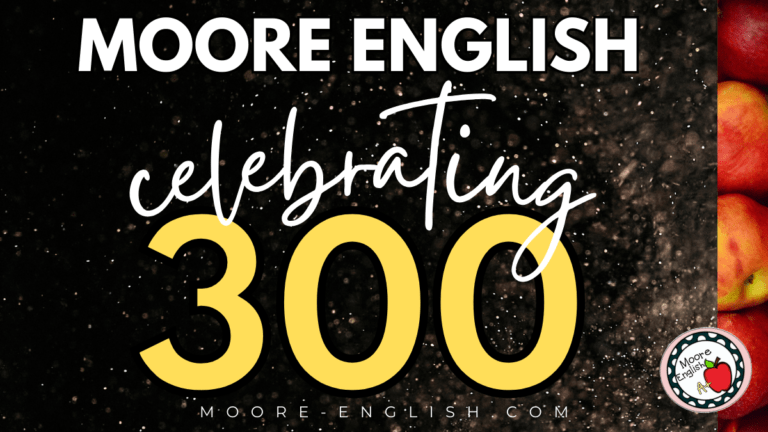At the high-school level, we don’t do much with holidays. In October, I gleefully trashed every newsletter that mentioned Halloween classroom activities. But this month, Teaching Tolerance sent a collection of resources for discussing Thanksgiving in the classroom. Even though Thanksgiving is a footnote in my secondary ELA classroom, I stopped to read. Of the many teacher blogs and educational websites I follow, Teaching Tolerance is one that consistently challenges. The challenge comes in different forms–checking my privilege, adjusting my language, forcing reflection. But each challenge is also an opportunity for growth and reflection.
Social justice was a pillar of my teacher-preparation program. In the years since I’ve graduated and started teaching, I’ve become more and more aware of the obligation I have to my students. At another point in my life, I probably would have argued that teaching is an act of social justice. But it’s probably more accurate to say that teaching is political, and teaching for social justice is a political action. Here are some ways to take action for social justice in your classroom:
This post this post may contain affiliate links. Please read the Terms of Use.
Privilege in the Classroom
Privilege is part of education, and its impacts are felt in districting, tracking, assessing, and programming. Hiding from the role privilege has played and continues to play in education does not help. Instead, here are some resources that I’ve found valuable:
- What is White Privilege, Really? by Cory Collins does a good job unpacking the term “white privilege.” The article distinguishes white privilege from racism, tracks its development and forms, and offers educators tools for confronting white privilege.
- Similarly, ASCD’s interview with Robin DiAngelo on Educators’ “White Fragility” was helpful for me in terms of connecting self-awareness and privilege. In particular, the article charges administrators and building leaders with “disrupting the racial status quo.”
- Privilege by Kyle Korver is an article I’ve mentioned before and that I’ve since included in my unit about The Great Gatsby, but it’s a great text to bring to students so discussion of privilege becomes part of the classroom conversation.
A Language of Social Justice
Language can be a tool of oppression and imperialism. As teachers, words can be our greatest tools for promoting a more inclusive world. Here are some tools that evaluate the role of language as a tool:
- In this excerpt from Stay Woke, Tehama Lopez Bunyasi and Candis Watts Smith write On Dog Whistle Politics, Gaslighting, and Other Contemporary Political Tools. That the text is formatted as a dictionary further highlights the impact of language. In other words, language can illuminate, or language can obfuscate and injure in the name of stability and promotion of an oppressive status quo.
- In Words Create Worlds, Madeline McNeely writes for the Interaction Institute for Social Change. McNeely describes the importance of using language to create the world (and classroom) we want. The article also links to A Progressive’s Style Guide, which includes inclusive language suggestions that I am consciously trying to implement in my classroom.
- Like Korver’s article, Chimamanda Ngozi Adichie’s Ted-Talk The Danger of a Single Story is a text I’ve referenced before, and it’s a text I include in my unit on Things Fall Apart. However, it’s also a great study of the power of language to create narratives. In the context of the classroom, it challenges teachers to consider how our words and actions communicate our values to our students. What narrative are we creating? One of love? Or one of otherness?
Classroom Libraries as Tools of Social Justice
As repositories of learning and language, classroom libraries are ways teachers communicate values to students. For this reason, cultivating a diverse classroom library helps all students find their place in the classroom, in the community, and in the world’s future. Here are some resources to aid in this pursuit:
- No one promotes diverse literature better than Danielle at Nouvelle ELA. If you’re looking for diverse titles for your classroom library, she has you covered! Check out these posts about diverse titles.
- For me, this list of 15 Resources ot Ignite Your Passion for Diverse Books by Stephanie at Writing Mindset was a game changer. This list expanded my reading tremendously and helped me find better ideas and resources for curating my classroom library.
- In this article from the New York Times, Emma Goldberg asks Do Works by Men Implicated by #MeToo Belong in the Classroom?. How do teachers handle this conversation in the classroom? And how does it impact our classroom libraries and reading lists? Goldberg describes several teachers’ approaches to trying to answer these questions.
How do you bring social justice to your classroom? What other social justice resources should I check out? Let me know below.








